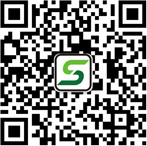Explore the fundamentals of Digital Mobile Radio (DMR). This guide breaks down the DMR standard, its key tiers, operational benefits, and why it's a leading choice for modern professional communication systems.
In the world of professional wireless communication, clarity, reliability, and efficiency are not just luxuries—they are necessities. For decades, analog radio served as the backbone for industries ranging from public safety to logistics. However, the digital revolution has ushered in a new standard, offering superior performance and advanced capabilities. At the forefront of this shift is Digital Mobile Radio, commonly known as DMR. But what exactly is it?
This article provides a comprehensive overview of DMR, breaking down its core principles, operational tiers, and the tangible benefits that make it a cornerstone of modern professional communication.
# The Core Concept: What is DMR?
Digital Mobile Radio (DMR) is an open digital radio standard developed by the European Telecommunications Standards Institute (ETSI). It is designed specifically for professional mobile radio (PMR) users. Unlike proprietary systems, an open standard means that multiple manufacturers can produce compatible equipment, fostering competition, innovation, and lower costs for users.
At its heart, DMR converts voice signals into digital data packets before transmission. This fundamental shift from analog wave transmission to digital data transfer is the source of DMR's significant advantages.
# How DMR Works: The Digital Advantage
The transition to digital brings several immediate and impactful improvements over traditional analog systems:
1. Crystal-Clear Audio Quality: Digital signals are less susceptible to the static, background noise, and signal degradation that plague analog radios, especially at the edge of their coverage range. With DMR, you either hear a clear voice or nothing at all, eliminating frustrating, partially intelligible communications.
2. Increased Capacity and Spectral Efficiency: This is one of DMR's most critical benefits. DMR uses a technology called TDMA (Time Division Multiple Access). Imagine a single radio frequency as a highway. Analog is a single lane, allowing only one conversation at a time. TDMA effectively creates two time slots on that same frequency, like adding a second lane. This allows two separate groups to hold simultaneous conversations on the same frequency, doubling the capacity of your existing spectrum without needing additional licenses.
3. Extended Battery Life: Because a TDMA radio only transmits during its assigned time slot, it is active for roughly half the time compared to an analog radio. This reduced duty cycle directly translates to significantly longer battery life, ensuring your teams can operate for entire shifts without needing a recharge.
4. Enhanced Data Applications: The digital protocol natively supports the transmission of data. This enables features that are cumbersome or impossible with analog, such as:
* Text Messaging: Send discreet texts to individuals or groups.
* GPS Location Tracking: Monitor the real-time location of personnel and assets.
* Telemetry: Remotely monitor and control equipment.
* Emergency Alerts: Send a silent panic signal with user ID and location.
# The Three Tiers of DMR: Structured for Every Need
The DMR standard is organized into three tiers, each catering to different levels of operational complexity.
* Tier I: This tier covers unlicensed, low-power equipment operating in the license-free spectrum. It's suitable for simple, personal, or recreational use but lacks the robustness and features required for professional applications.
* Tier II: Tier II is the heart of conventional professional DMR systems. It covers licensed conventional systems that operate in the VHF and UHF bands. This tier is ideal for businesses that need reliable, wide-area coverage for their teams, such as in manufacturing, education, hospitality, and security. Tier II systems utilize the capacity and audio benefits of DMR but typically do not involve advanced trunking.
* Tier III: This is the most advanced tier, designed for trunked radio systems. In a trunked system, a pool of frequencies is shared automatically among a large number of users. When a user presses the push-to-talk button, the system instantly assigns an available frequency channel (time slot). This maximizes efficiency, supports a very high number of users, and enables complex, wide-area networks with features like system-wide calling and advanced data services. Tier III is the standard for city-wide public safety, utilities, and large-scale transportation networks.
# DMR in the Real World: Practical Applications
The robustness and versatility of DMR make it the technology of choice across numerous sectors:
* Manufacturing and Warehousing: Coordinating logistics and assembly lines with clear audio and text messaging in noisy environments.
* Public Safety and Security: Enabling reliable communication for security teams with GPS tracking and emergency alerts.
* Event Management: Coordinating large events where multiple teams (medical, security, logistics) need separate, simultaneous channels.
* Transportation and Logistics: Managing fleets of vehicles and tracking assets across a wide area.
* Education and Healthcare: Facilitating discreet and efficient communication across large campuses.
Digital Mobile Radio represents a significant evolutionary step in two-way communication. By offering superior audio clarity, doubling spectral capacity, extending battery performance, and enabling a suite of advanced data features, DMR provides a powerful, cost-effective solution for modern organizational needs. Whether for a single-site business using Tier II or a multi-site enterprise relying on a Tier III trunked system, understanding and adopting DMR is key to building a more efficient, reliable, and intelligent communication infrastructure. It is not merely an alternative to analog; it is the definitive upgrade for the digital age.



